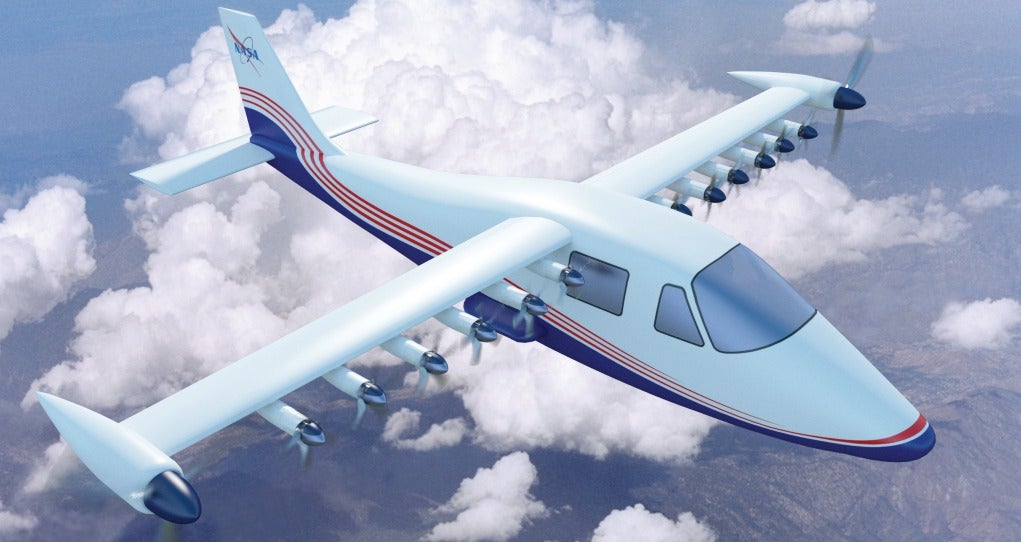Nasa prepares first all-electric airplane for test flight
Nasa is nearing the first test flight of an experimental aircraft that could make general aviation greener, cleaner, and quieter.

Your support helps us to tell the story
From reproductive rights to climate change to Big Tech, The Independent is on the ground when the story is developing. Whether it's investigating the financials of Elon Musk's pro-Trump PAC or producing our latest documentary, 'The A Word', which shines a light on the American women fighting for reproductive rights, we know how important it is to parse out the facts from the messaging.
At such a critical moment in US history, we need reporters on the ground. Your donation allows us to keep sending journalists to speak to both sides of the story.
The Independent is trusted by Americans across the entire political spectrum. And unlike many other quality news outlets, we choose not to lock Americans out of our reporting and analysis with paywalls. We believe quality journalism should be available to everyone, paid for by those who can afford it.
Your support makes all the difference.Propeller-driven aircraft could be about to go electric: Nasa is preparing for the first test flight of its experimental all-electric X-57 aircraft later this year, an airplane powered not by aviation gasoline, but by the same lithium-ion batteries you might find in a laptop computer.
The X-57 flight demonstrator project was launched in 2016 with the goal of exploring all-electric propulsion in hopes of developing more efficient, more environmentally friendly aircraft. Aviation makes up about two per cent of global CO2 emissions, according to the International Civil Aviation Organization, and Nasa notes that, unlike automotive gasoline, aviation gasoline still contains lead, albeit lower levels, and is a leading cause of lead pollution in the environment.
The X-57 is currently scheduled to take its first test flight sometime in July.
Experimental aircraft with the ‘X’ designation, X-planes, go back to the 1940s, when a joint effort by the US Navy and the forerunners of both Nasa and the US Air Force sponsored the X-1 program, centered around the bullet-shaped, rocket-powered Bell X-1 aircraft Chuck Yeager would use to break the sound barrier in 1948.
Later entries in the series included the X-15 in the late 1950s, and the X-51 in the 2010s, both of which explored high altitude, hypersonic flight, that is, flying faster than five times the speed of sound.
The core of the X-57 is not nearly as exotic as some of its X-plane forebears, but Nasa is nevertheless testing multiple cutting edge technologies with the aircraft. Technologies employed in this case not to fly higher or faster, but quieter, and more efficiently.
The space agency took a commercially available Tecnam P2006T, an Italian-made, twin-engine general aviation aircraft, and then started making modifications.
Gone are the twin four-cylinder four-stroke Rotax 912S3 piston-driven engines mounted close to the fuselage along the wing, replaced by two, 60-kilowatt electric motors driving 5-foot diameter propellers mounted near the wing tips. Along the leading edges of the wings are mounted 12 smaller, 1.9-foot diameter electric motor-driven rotors.
Nasa reconfigured the X-57’s wings to just 42 per cent of their former size, a design the space agency said reduces drag to make flight more efficient.
The 12 smaller rotors help mitigate the loss in lift from the small wing, actually doubling the lift available to the aircraft. It’s an evolution of a technology Nasa calls Leading Edge Asynchronous Propeller Technology, or Leaptech, which the space agency tested on a model wing mounted on a truck driven at high speeds through the desert in 2015.
The electric motors and aviation electronics are powered by two, 400-pound lithium-ion battery packs mounted in the X-57 aircraft cabin that provide a combined 23 kilowatt hours or power. Nasa spent a lot of time and effort making sure they could not overheat and catch fire.
If the X-57 can demonstrate all-electric flight capability over the California desert near Nasa’s Armstrong Flight Research Center, it could pave the way to electronic aircraft 40 per cent more efficient than those flying today. And with no combustion engines involved, those flights could be quieter, although not silent — even electric propellers make some noise, as anyone who has seen a consumer drone fly.
Join our commenting forum
Join thought-provoking conversations, follow other Independent readers and see their replies
Comments